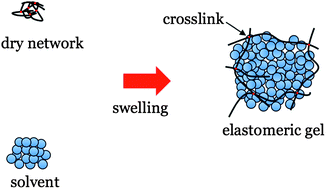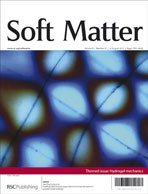Experimental determination of equations of state for ideal elastomeric gels
Abstract
A polymer network can absorb a solvent and swell, forming an elastomeric gel. The model of ideal elastomeric gels is based on two assumptions. First, the volume of a gel is the sum of the volume of the dry network and that of the solvent. Second, the free energy of the gel is the sum of the free energy due to stretching the network and that due to mixing the polymer and the solvent. These assumptions lead to a set of equations of state, which can be tested experimentally without invoking any specific models of statistical mechanics. Here we test the model of ideal elastomeric gels by conducting experiments with polyacrylamide hydrogels, and by extracting from the literature four sets of data on polyacrylamide hydrogels and polyacrylamide–water solutions. For an ideal elastomeric gel, the effect of mixing the polymer and the solvent is represented by the osmotic pressure as a function of the swelling ratio. We show that this function obtained by several distinct experimental methods is consistent. Specifically, the function obtained from a gel under different states of applied stress is the same, the function obtained from a free-swelling gel is the same as that obtained from the constrained-swelling gel, the function is independent of the crosslink density, and the function obtained from the gels is similar to that obtained from the solutions. We further show that the Flory–Huggins model of mixing with a constant Flory–Huggins parameter does not fit the experimental data well, but does capture the trend of the data over four orders of magnitude in the osmotic pressure.

- This article is part of the themed collection: Mechanics and Physics of Hydrogels

 Please wait while we load your content...
Please wait while we load your content...